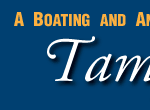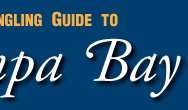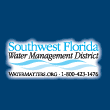CONTACT US:
Florida Fish and Wildlife
Conservation Commission
Fish and Wildlife
Research Institute
100 Eighth Avenue SE
St. Petersburg, Florida 33701
727-896-8626
|
|
|
Tampa Bay Estuary Program
100 Eighth Avenue SE
St. Petersburg, Florida 33701
727-893-2765
|
|
|

|
|
Funding for this project was obtained through Tampa Bay Estuary Program specialty license plate funds.
|
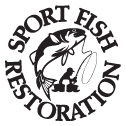
|
|
Additional funding for this project was obtained through the Federal Aid in Sport Fish Restoration Fund.
|
|
|
 |
Fish images © Diane Rome Peebles. Illustration provided for viewing purposes only.
Below is a small list of the popular sport fish caught in the Tampa Bay estuary.
Fish Identification: Often, sport fish look very similar and are hard to identify. This can be a problem when the regulations are different for each species. To help with the identification of similar species, the identification sheets below were developed and contain simple, easily seen identification keys that will help fishermen identify similar species. These sheets can be printed using a desktop printer and taken out on the next fishing trip.
Know Your Florida Fish: Greater Amberjack and Banded Rudderfish (PDF, 1.5 MB)
Know Your Florida Fish: Black Grouper, Gag, and Red Grouper (PDF, 1.6 MB)
Know Your Florida Fish: King Mackerel and Spanish Mackerel (PDF, .97 MB)
Know Your Florida Fish: Florida Pompano and Permit (PDF, 1.35 MB)
|
 |
Flounder: Inshore within bays near or within grass flats during spring and summer; in the Gulf beginning in the fall with the onset of colder weather. |
 |
Red Drum (Redfish): Inshore near grass beds, oyster bars, and docks pilings; deeper channels during the warmest and coolest months |
 |
Snook: Canals, tidal creeks, and other deep warm waters in cool months; near tidal passes and mangrove fringe at high tide. |
 |
Spotted Seatrout (Speckled seatrout): Inshore over grass beds, sand, and sandy/mud bottoms; deeper water during warmest and coolest months. |
 |
Tarpon: Found mostly inshore near bridges, pilings, rock walls, harbors, around structures, and on flats. |
 |
Spanish Mackerel: Inshore, nearshore, and offshore over grass beds and reefs |
 |
King Mackerel (Kingfish): Nearshore and offshore; occasionally taken from piers running into deep water. |
 |
Red Grouper: Bottom dwelling fish associated with hardbottom; juveniles offshore along with adults greater than six years old; nearshore reefs |
 |
Black Grouper: Offshore species; adults associated with rocky bottoms, reef, and drop-off walls in water over 60 feet deep; young may occur inshore in shallow water |
 |
Gag (Gag Grouper): Adults offshore over rocks and reefs; juveniles occur in seagrass beds inshore |
 |
Cobia: Both inshore and nearshore inhabiting inlets, bays and among mangroves; frequently seen around buoys, pilings, and wrecks. |
 |
Crevalle Jack (Jack Crevalle): Common to both inshore waters and the open sea. |
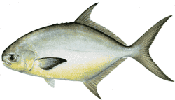 |
Florida Pompano: Inshore and nearshore waters, especially along sandy beaches, along oyster bars, and over grassbeds, often in turbid water; may be found in water as deep as 130 feet. |
 |
Gray (Mangrove) Snapper: Juveniles inshore in tidal creeks, mangroves, and grass beds; adults generally nearshore or offshore on coral or rocky reefs. |
 |
Sheepshead: Inshore around oyster bars, seawalls, and in tidal creeks; moves nearshore in late winter and early spring for spawning, gathering over rocks, artificial reefs, and around navigation markers. |
Back to Top
|
If you have any questions, comments, or suggestions about this Web site, please e-mail us at Boating_Guides@MyFWC.com.
Would you like to receive notices of changes to this Web site and the Boating and Angling Guide to Tampa Bay? If so, please e-mail us and include SUBSCRIBE-TAMPA in the subject line.
|
|
